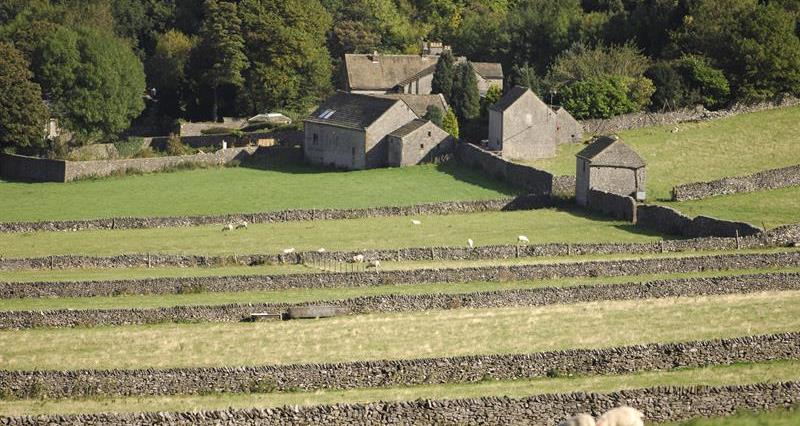Not all AHA (Agricultural Holdings Act) tenancies allow succession. To be an AHA tenancy, the tenancy must have started before 1 September 1995. Generally, only tenancies granted before 12 July 1984 are capable of succession (although there are some exceptions to this). Those that do have the potential for succession allow only two statutory successions from 14 November 1976.
A tenancy cannot be succeeded if it is subject to a notice to quit served before the death of the tenant.
On 1 September 2024 changes to the succession rules for AHA tenancies come into force in England implementing the Agriculture Act 2020. They apply where a tenant dies or a retirement notice is served on or after 1 September 2024.
The previous rules will continue to apply to deaths or retirement notices before this date.
1. Eligibility
A potential successor must now be able to demonstrate that they are both ‘eligible’ and ‘suitable’.
To be eligible the applicant must satisfy the following tests.
- Close relationship test.
- Principal source of livelihood test.
The close relationship test
Only the following persons satisfy the close relationship test:
- spouse (including civil partner) of the tenant
- sibling of the tenant
- child of the tenant
- person treated as a child of the tenant.
Grandchildren, nephews and nieces do not satisfy this test, and so will not be eligible to succeed.
Principal source of livelihood test
To pass this test the applicant must demonstrate that in at least five of the previous seven years their only or principal source of livelihood is derived from their agricultural work on the holding.
This can be a continuous period of five years, or two or more discontinuous periods amounting to five or more years.
The seven-year period is calculated:
- If the tenant has died, as the seven-year period ending on the date of death.
- If the tenant is retiring; case law indicates that it is the seven-year period ending on the date the retirement notice is served by the tenant on the landlord.
To be considered as the principal source of livelihood, the total benefit should normally be more than 50% of the applicant’s livelihood.
‘Livelihood’ is considered as more than just income, but also benefits in kind. The benefits are not restricted to essentials for living such as food and accommodation, but can also include items such as logs, meals, fuel, farm vehicles and electricity.
Suitability testÌý
To be suitable all relevant matters must be considered such as:
- the person’s likely capability and capacity to farm the holding commercially, with or without other land, taking into account the need for high standards of efficient production and care for the environment in relation to managing that holding;
- the person’s experience, training and skills in agriculture and business management;
- the person’s financial standing and their character;
- the character, situation and condition of the holding;
- the terms of the tenancy.
The tribunal must be satisfied that, if the applicant had applied in an open competition, a prudent and willing landlord could reasonably be expected to regard the applicant as among the candidates they'd be willing to grant the tenancy to.
The new provisions state that the tribunal must disregard:
- all offers as to rent in relation to the holding, and
- the age of the applicant.
The new suitability test focuses on business competency and considers the applicant’s ability to manage the holding in a manner which protects the environment. It is subjective and potentially presents a higher bar to achieve than the previous version of it.
The old commercial unit occupation test has been removed which means that land being farmed, other than the holding in question, will no longer be prejudicial to the succession.
2. Application to the tribunal
The time limits are strict and must be adhered to. They will not be extended for any extenuating circumstances.
To succeed, an application must be made to the First Tier Tribunal (Property Chamber) in England, or the Agricultural Land Tribunal in Wales:
- Death of tenant – within three months of a tenant’s death; or
- Retirement of tenant – within one month of serving a retirement notice.
3. Procedure for succession on death
The landlord must be informed in writing by the personal representatives of the tenant’s death. This should be done even if the landlord knows of the death.
The application for succession must be submitted to the tribunal within three months of the date of the tenant’s death.
The application must be made on the correct form, and we would strongly encourage you to seek the help of an experienced land agent or solicitor.
A notice must also be served on the landlord at the same time, notifying them that an application is being made to the tribunal. Again, this must be in the correct form.
The landlord then has one month to reply. If no reply is submitted, then the landlord is not entitled to dispute the application.
The landlord may have served a notice to terminate the tenancy when they were informed in writing by the personal representatives of the tenant’s death. If the landlord has served such a notice to quit, then, at the hearing, the tribunal will consider whether to uphold that notice to quit or to agree to the succession.
Multiple applications
Multiple applications (i.e. more than one person) can be made for succession following death.
However, if the deceased tenant has specified one of the applicants as their successor in their will, the tribunal must consider that application first. It cannot consider any of the other applications unless the nominated successor is found to be unsuitable or ineligible.
If there is no nominated successor (or they are found to be unsuitable or ineligible), then the tribunal can seek the landlord’s and applicant’s consent to grant a joint tenancy. If consent isn’t forthcoming, then the tribunal will have to consider which of the applicants is most suitable to succeed the tenancy.
4. Procedure for succession on retirement
A retirement notice can be served on the landlord to start the process of succession when the tenant is permanently, physically or mentally incapacitated. The previous age threshold of 65 years no longer applies. Removal of the minimum age will allow for a more timely application that suits the successor.
The successor is nominated by the current tenant and only one application can be made to succeed by retirement (whereas several can be made to succeed following death, as set out above).
In the case of joint tenancies, all tenants must be physically or mentally incapacitated before the retirement notice can be served.
The nominated successor must then apply to the tribunal within one month of the retirement notice being given to the landlord.
The application must be made on the correct form, and we would strongly encourage you to seek the help of an experienced land agent or solicitor.
A notice must also be served on the landlord at the same time, notifying them that an application is being made to the tribunal. Again, this must be in the correct form.
The landlord then has one month to reply opposing the application, and in that reply can allege that they will suffer hardship if succession is granted.
At the hearing the tribunal considers the successor, whether they satisfy the livelihood test and the landlord’s application.
If succession is refused, then the tenancy will continue as if the retirement notice was never served. The nominated successor will not then be able to apply for succession on the death of the tenant.
As there is only one opportunity to succeed, it is important that you take expert advice on retirement applications.
5. The tribunal
If the tribunal grants succession, the succeeded tenancy’s terms will be the same as the previous agreement, although the tribunal will prevent assignment, sub-letting or parting with possession if these terms are not already included.
The landlord and new tenant can serve a notice on the other party within three months of the tribunal’s decision to vary the terms and the rent. If the parties cannot agree any proposed variation, then the matter will be determined by an arbitrator.
Succeeding without an order from the tribunal
It is possible to agree a succession with a landlord on death or retirement without seeking the consent of the tribunal.
To succeed by agreement the following must apply:
- The tenancy must be capable of succession;
- The close relationship test must be met;
Either:
- the potential successor must be the only possible applicant; or
- the succession tenancy is granted by agreement between the landlord and original tenant before a retirement notice is served, and before the death of the original tenant.
Agreed successions are common in practice and should be properly formalised as an addendum to the tenancy agreement. Again, getting professional help to secure and document any agreement is important. Forward planning and proactive discussions with your landlord may help you to achieve an agreed succession.
Succeeding part of a holding
This will depend upon what basis the tenancy is being succeeded:
- Succession following death – with your agreement, the tribunal can award part of the holding.
- Succession following retirement – you are only able to succeed the tenancy to the whole of the holding.
Get support
Succession is a complicated process. It can be very easy in the turmoil following a tenant’s death for the family to forget to make an application to the tribunal in time.
Although it is possible to succeed without going to the tribunal, this relies on the agreement of the landlord, the tenancy being capable of succession and the applicant passing the close relationship test.
It is important that families seek prompt advice and CallFirst can provide this. NFU members can reach out to CallFirst on 0370 845 8458Ìýto speak to one of our Legal and Technical advisers.



